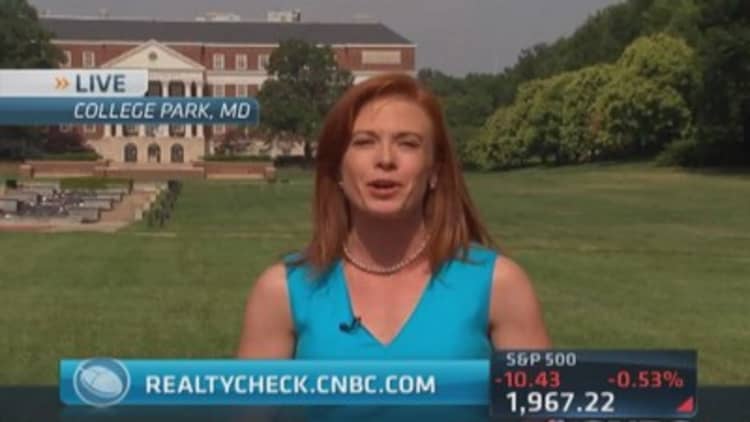
From the front lobby, it could easily be mistaken for a spa hotel—the blue wave lighting on the wall behind the concierge desk, the sleek sofas and flat screen monitors. But this is no hotel. It's student housing—millennial style—and it may be one of the best under-the-radar real estate plays of the decade.
"This is an industry that is ripe with opportunity," said Bill Bayless, CEO of American Campus Communities, the largest student housing REIT (real estate investment trust) in the nation and developer of Drexel University's Chestnut Square, a 361,000-square-foot luxury dormitory for 861 students on the Philadelphia campus. "If you look at the student housing sector, it was ignored by the mainstream real estate industry for more than 40 years."
Times are changing. Although most of the private investment in student housing takes place off campus, budget constraints have major universities opening their doors to private investors on campus, like with the Drexel property. The universities admit they would rather spend their limited cash on academic programs and leave the living spaces to the experts.
"Student housing isn't just real estate. It's really creating physical assets that are conducive to academic achievement," Bayless said as he showed off the building's large physical fitness center, movie theater and virtual driving range. The dorm offers private suites with full kitchens and baths, as well as traditional double rooms and communal spaces.
"They really know how to do this kind of housing right. They have a really good grip on the market, on what the students want, on what millennials want," said Robert Francis, Drexel's vice president of facilities.
Read More Mortgage volume remains stuck despite lower rates
The building may scream luxury, but its rates are comparable to other on-campus housing. American Campus Communities' portfolio consists of 200 properties nationwide with close to 130,000 beds. It manages properties as well, which only add to the revenue stream. Projects like these are sorely needed, as aging dormitories built for the baby boom generation need to be replaced, and as the U.S. student population continues to grow. The company's shares are up nearly 19 percent this year.
"The fundamentals are really, really strong," said Mitch Roschelle, a partner in the real estate practice at consulting firm PWC. "When apartments get hot, the apartment derivatives tend to heat up also, that's part of it."
Student housing is now an estimated $4 billion to $5 billion business. While American Campus is the largest REIT player by far, others in the space include Campus Crest and Education Realty Trust.
Read More Pending home sales surge 6.1% in May vs. 1.2% gain estimate
"There's definitely heightened interest in the segment, and because of that you're going to see some winners and some losers," said Christopher Merrill, co-founder and president of real estate investment firm Harrison Street Real Estate Capital, which invests in student housing.
Some markets will be overbuilt, and some schools could see enrollment dips. That is why developers are looking to big public universities for on-campus opportunities because enrollment tends to be more stable.
"It's very difficult to paint the industry with a broad brush and say, yes, student housing is going to be good at 4,000 schools and universities around the country, that's not going to be the case," he added.
As with other real estate sectors, international interest is driving growth and will continue to do so for the foreseeable future.
Read More When real estate flips you the finger
"In 2006, foreign students enrollment in U.S. colleges and universities as a percentage of the total population was about 5 percent; in 2021 it jumps up to an estimated 12 percent," Roschelle said.
At Chestnut Square, international students make up 9 percent of the residents; next year that jumps to 19 percent.
Student housing is also getting a boost from baby boomers. A growing segment of this older generation is retiring to college towns, driving down vacancies in the apartment sector and limiting the off-campus options for students.
Mike Lynch, a junior at Drexel, shopped around for off-campus housing, but found it was more expensive when he factored in utilities, including cable and Internet. Chestnut Square fit his bill.
"It's a little expensive, but everything is included," said Lynch, who is paying about $870 a month, comparable to university-owned housing. "You definitely get the most you can get for what you're paying."
—By CNBC's Diana Olick. CNBC's Stephanie Dhue contributed to this report.
Correction: This version corrected Christopher Merrill's job title.


